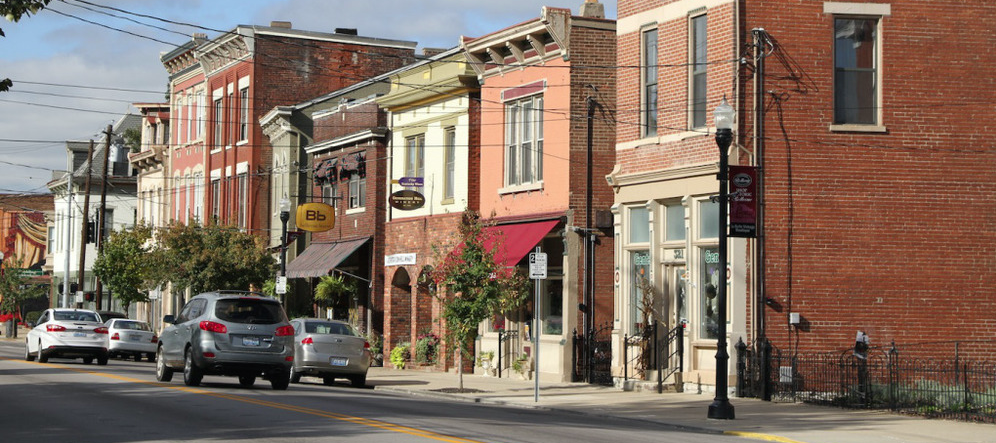3.5M
Downloads
684
Episodes
The Strong Towns Podcast is a weekly conversation on the Strong Towns movement, hosted by Strong Towns Founder and President Charles Marohn and frequently featuring special guests. The podcast explores how we can financially strengthen our cities, towns, and neighborhoods and, in the process, make them better places to live. Join Chuck in examining how everything from urban design to economics to systems theory to psychology helps inform this core question.
Episodes

Monday Apr 29, 2019
Memphis’s U-Turn: Interview with Doug McGowen
Monday Apr 29, 2019
Monday Apr 29, 2019
The strongest and most resilient communities, just as with people, are often those that have endured unusual hardship and come out stronger for it. There’s a clarity of focus and purpose that you develop because you have to. You don’t have the luxury not to be resourceful or not to define and fight for the future you want.
Cities and towns that have struggled tend to develop, and prize, a culture of what Doug McGowen calls “grit and grind.” Memphis, Tennessee certainly has that culture.
McGowen is the Chief Operating Officer for the City of Memphis. Coming out of a long military career, he and his family weighed moving to any number of places, but McGowen’s kids said, unanimously, “We love it here,” so they stayed in Memphis. McGowen ended up on the Mayor’s innovation team and eventually as the city’s COO.
Memphis is a city that’s been through some hard times. It has struggled with, and continues to struggle with, poverty and segregation. For decades, Memphis saw its historic core neighborhoods suffer blight and abandonment, as people and wealth fled to the suburbs. The city made a number of bad investments over the years out of a desperate desire to chase economic growth. They were far from alone in any of this. Nearly every place in America made the same set of mistakes in the post-WWII era, but in some ways, Memphis was a poster child.
But now, as a conversation with McGowen makes clear, Memphis is becoming a trailblazer when it comes to recognizing the fallout of the suburban experiment and embarking on a better path.
And this shouldn’t be surprising. The places that went all-in and suffered the most might just be the places that can show us a better way. They’re ahead of the rest of us because they have to be. The stakes of the Strong Towns mission—a nation of financially resilient communities that make thoughtful, incremental investments in their core strengths—are as evident in Memphis as in any city in America. And so is the potential.
A 180-Degree Turn
When asked what Memphis is doing differently than it used to, McGowen describes a remarkable 180° turn in regard to the way city leaders address growth and development. For decades, Memphis annexed territory with zeal, doubling the city’s land area even as its population decreased. It was believed that this was the way to avoid a downward spiral of inner-city decline: take in prosperous suburban areas. Memphis adopted an explicit policy of extending sewer service beyond the edges of the city to juice growth.
And so, says McGowen, “We got exactly what we asked for. We got a heck of a lot of suburban growth. And as a result, we’re a city that’s probably too big—we’ve outgrown our ability to serve anyone effectively.”
Instead of producing prosperity, Memphis’s approach accelerated inner-city decline. The city found its sources of tax revenue spread ever thinner, while the cost of providing essential services like sewers and police protection escalated. Memphis ballooned to a city of 650,000 that had to provide services to a land area of 340 square miles—as large as New York City’s five boroughs, and comparatively emptier than famously-empty Detroit.
At a certain point, to make matters worse, the city found itself essentially dependent on continued annexations to balance its budget: each addition of territory provided a short-term infusion of revenue in exchange for long-term liabilities. It’s as clear a case as any of what Strong Towns has labeled the Growth Ponzi Scheme.
In the past few years, though, the city’s leadership has undergone a paradigm shift. According to McGowen, this was driven by a clear-eyed look at the data on the costs and benefits of annexation and decentralized development. But it also required a willingness on the part of the ones with the data—the city’s elected officials and staff—to have open, tough conversations with the citizenry. Says McGowen:
“You’re threading the needle. But the data pointed us in the right direction. If we did not have good data that showed us that this was the right thing to do, we wouldn’t be able to have the conversation as richly as we had.”
McGowen and his staff were able to present the tough fiscal realities about the near-impossibility of providing the services people expect and desire—transit, police protection, parks—to twice as large an area without a corresponding increase in revenue.
“It’s pretty stark. It does hit you in the face about what you have done by [adopting] this pattern of growth.”
Memphis recently completed a new comprehensive plan: Memphis 3.0. Unlike the previous one, which emphasized horizontal expansion, this one is all about reinvestment in Memphis’s existing neighborhoods. The city has even “de-annexed” some outlying territory.
The plan was the product of an intense amount of community involvement—15,000 Memphians attended the planning meetings—and it was members of the community that ultimately identified the “anchors” around which neighborhood investment would be focused. With this “anchor” strategy, Memphis’s leaders recognized that spreading investment evenly across the entire city would only dilute its impact. They needed to be tactical about where there were centers of economic and cultural activity could build on and seek to bolster.
If you want to know what the beginnings of a shift to a Strong Towns approach actually look like on the ground, here’s somewhere to look. Memphis is doing it. You start with your neighborhoods. Start with your existing residents and their concerns and needs. Make incremental investments in th estability and prosperity of these places. And base it all on an unflinching look at the data, including whatever uncomfortable conclusions it leads to.

No comments yet. Be the first to say something!